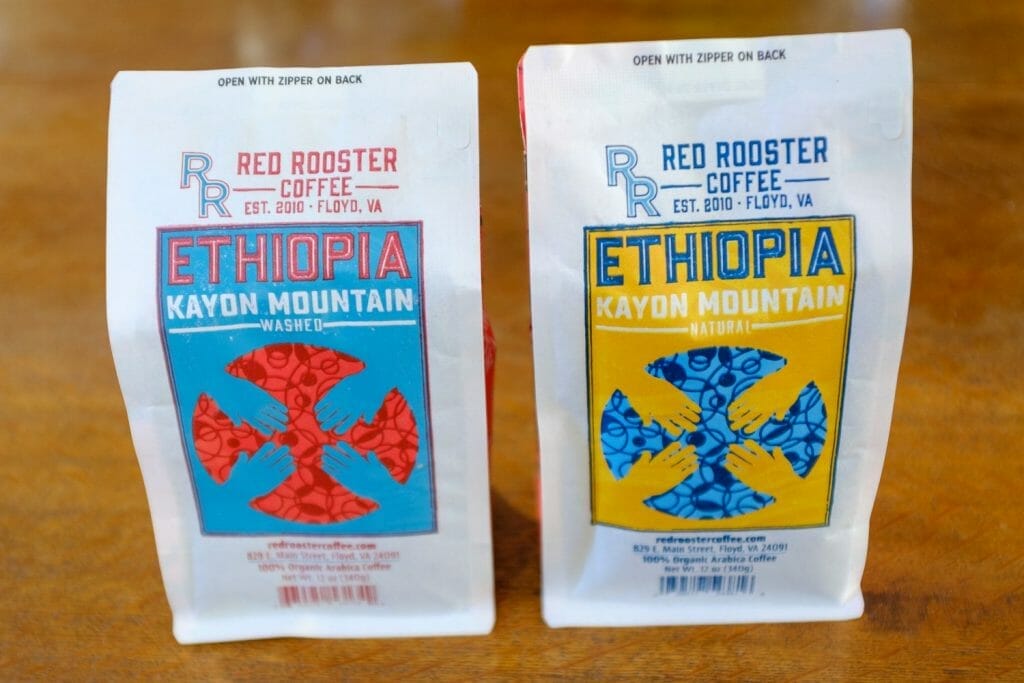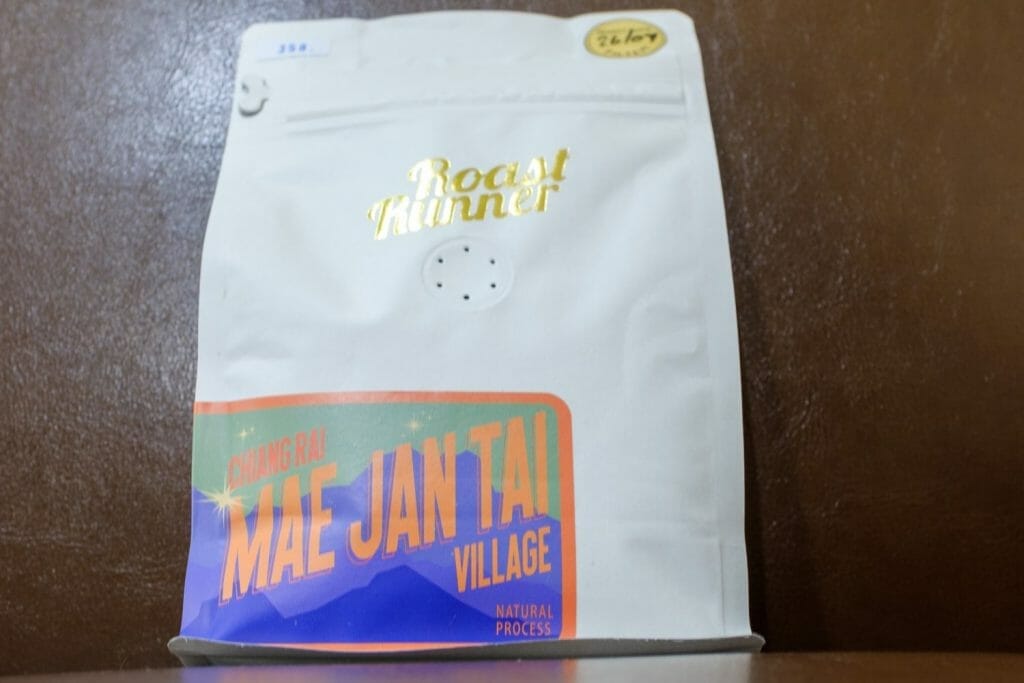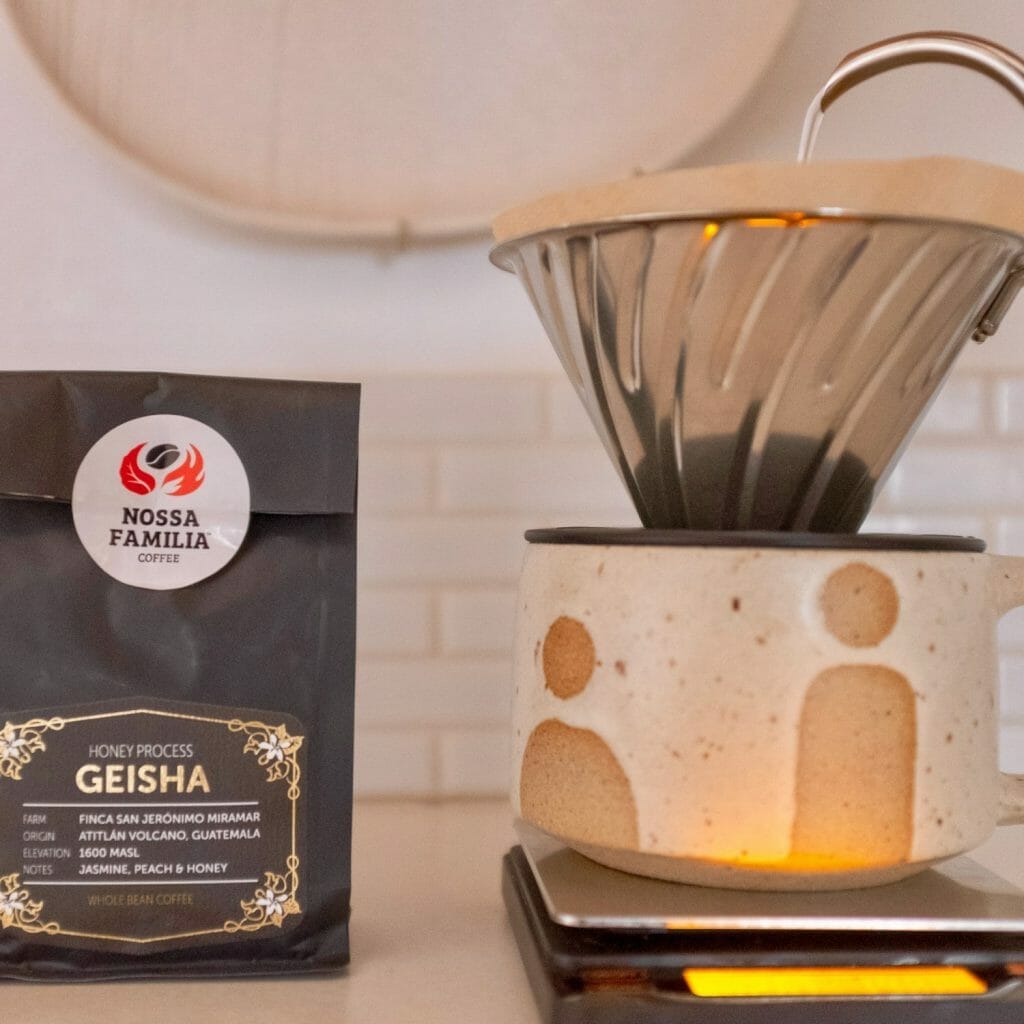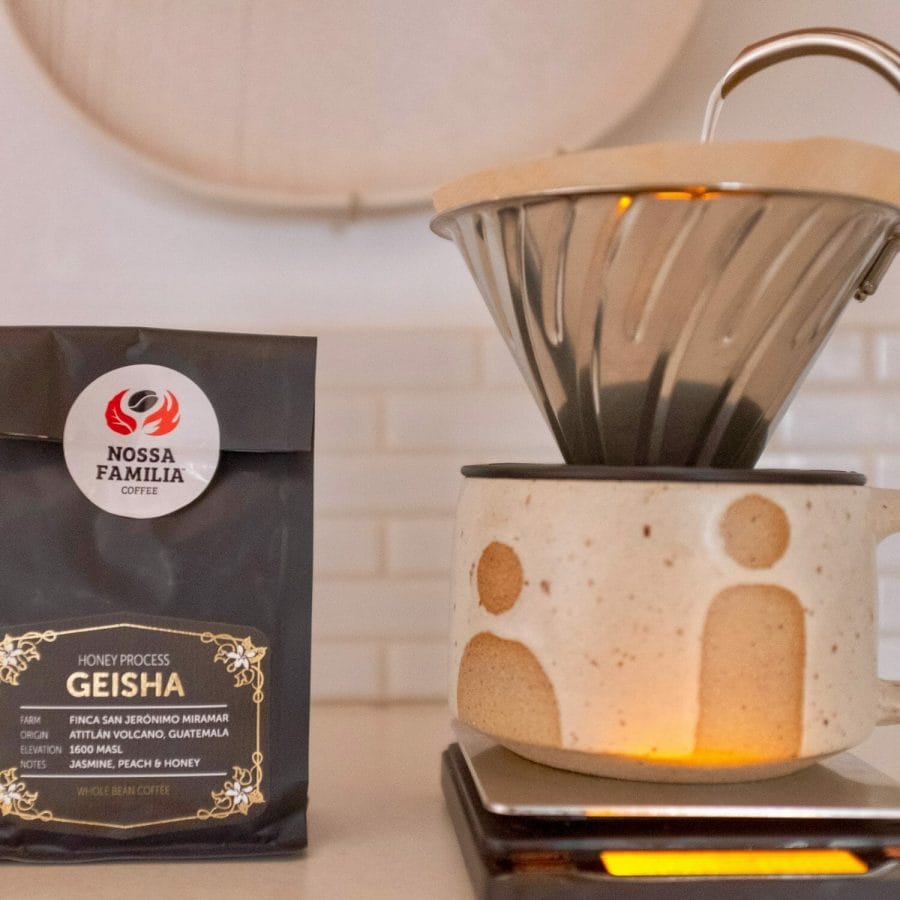Last Updated on May 30, 2023 by smiling-coffee-snob
If you’re new to the world of specialty coffee, one of the first things you’ll notice is the tremendous amount of detail on the bag. There’s the beans origin—often the specific farm, the coffee variety and coffee processing method. There also may be the roast level and tasting notes to describe the flavor.
All this detail may seem like overkill, but once you understand what it means, you’ll come to appreciate it. Not only does it show that the roaster actually knows where their coffee comes from, it will also give you a good idea how the coffee will taste.
How a coffee is processed dramatically influences the flavor profile. To help you understand the meaning behind this often overlooked detail, we will cover the primary methods of coffee processing and how they influence the taste of your coffee.
(Disclaimer: All the coffee recommendations are my personal recommendations and are not sponsored. However, the book links are affiliate links and if you buy something with them I’ll get a small commission at no extra cost to you).
Basic coffee processing
Since we focus on brewing the coffee bean, it’s easy to forget that coffee starts off as a fruit—it’s actually a cherry that grows on a tree. How it’s picked, sorted and cleaned all affect the final product.
At a basic level, coffee processing refers to the method a producer uses to separate the seed from the fruit. Some methods use water, others don’t. Some methods remove all the fruit, some partially remove it and some don’t remove any of it.
Even the drying process varies from method to method. There are machines that do it or it can be done in the sun. It can be fast or slow, on the ground or up on a drying bed. All these small differences lead to different flavor profiles, so once you know how the process works you will have a good idea what the flavor will be like.
Main coffee processing methods: Wet and dry

Coffee processing methods are along a spectrum between wet and dry. In between these two extremes are different variations that slightly alter the process. They are often based on where the coffee is grown and what resources are available locally. A farm with the resources to wash the beans with water are more likely to use a washed process. Places without much water often prefer to use the sun, called the natural process.
Washed process
The washed process is the most common method with specialty coffee since it allows the producer a lot of control. This level of control means a lower risk of defects and the potential to sell their coffee beans for a higher price.
The washed process starts by using a machine to remove the outer layers of pulp and flesh from the coffee cherries. Some of the flesh can’t be removed, so the beans are sent to a fermentation tank which breaks down the rest of the fruit flesh.
After the beans have been fermented to remove the last bits of flesh, they are sent to be washed again. This will make sure that everything is removed so that only the coffee seeds remain. Finally, the coffee is dried before it’s ready to ship.
How do washed coffees taste?
Washed coffees have complex flavor profiles that are higher in acidity. Whether this is good or bad depends on personal preference, but most specialty coffee drinkers like the distinct flavors washed processed coffees provide.
Washed coffees also have a lot of clarity and less body. As long as they are well stored and properly roasted, a high quality washed process coffee is likely to have flavors that clearly stand out to you. For example, if your coffee has tasting notes dark chocolate and cherry, you’ll be more likely to clearly taste these notes.
When choosing a washed process coffee, keep in mind that the roast level will also influence the flavor. Specialty coffees are generally roasted in the light to medium range which limits the chocolate and caramel types of flavors common to darker roasts. (However, it is possible to find excellent darker roasted specialty coffees).
Natural process or dry process
The dry process or natural process can be a polarizing topic, since it often producing flavors that don’t taste the way most coffees taste. There’s also a lot of potential quality control problems, so it requires a lot of skill to consistently produce high-quality natural coffees. If the coffee cherries aren’t dried correctly, they can grow mold or develop strong fermented fruit flavors that nobody wants.
Unlike the washed process, which separates the fruit from the seed before drying, when using the natural process the whole coffee cherry is dried in the sun and turned frequently to promote even drying. They are usually dried on the ground or on raised beds, which allow air to better circulate. After the cherries have dried, the outer layer of flesh is removed to reveal the beans inside.
It’s really hard produce natural coffees that don’t venture too far into funky fermented flavors. If this happens, it’s a huge loss for the farmer or producer (who may or may not be the same person). Since specialty coffee is so quality focused, this is a risk that many are not willing to take. In fact, many roasters avoid natural coffees all together.
How do natural coffees taste?

As you might expect, natural process coffees tend to have more body and sweetness. Since they are dried with the fruit intact, they usually have very fruity flavors compared to washed process coffees. A freshly roasted, high-quality natural coffee can have really powerful fruit flavors and aroma that’s really surprising the first time you try it.
Ethiopian coffees are one of the most common natural processed coffees and the flavors can be shocking. A lot of coffee lovers describe an Ethiopian natural as the coffee that showed them how different coffee can taste.
Naturally processed coffees can have variations of fruit and tea like flavors. I have had coffees with powerful blueberry flavors, but I’ve also had coffee that tastes just like black tea with lime. When you brew a cup of black coffee and it tastes exactly like black tea with lime it’s hard not to be amazed that coffee can naturally taste like this without anything added to it.
Less common coffee processing methods
While the washed and natural process are the primary ways to process coffee, there are a few other methods that fall in between them. Most of the other methods are primarily used in a single country or region, but as specialty coffee grows in demand, more and more countries are adopting them.
Semi-washed
This is also called the wet-hulled process and it’s mostly used in Indonesia. The cherries are pulped and then partially dried to around 30 percent moisture. After the initial drying, they are washed and then dried again. This process gives the coffee a lot of body and earthy flavors. Just like with natural processing, this is a polarizing coffee processing method that many love or hate.
How do semi-washed coffees taste?
You are most likely to find a semi-washed coffee from the Indonesian island of Sumatra. They are lower in acid and have flavors that are usually described as earthy and spicy. They are popular as darker roasts and common in many blends.
Generally speaking, Sumatran coffees aren’t terribly popular with specialty coffee roasters. There are exceptions, of course, but you’re more likely to find them in blends or dark roasts. When you do find a specialty roaster using beans from Indonesia it’s more likely to be one of the few washed process coffees and from a different area.
Pulped natural process and honey process
Both the pulped natural process and the honey process try to combine the best aspects of washed processing, while using less water. Both methods partially remove the pulp and wash the beans, but don’t completely remove the mucilage.
The pulped natural process is mostly used in Brazil and it generally removes more of the pulp than the honey process. It also uses more water than honey processing, but much less than the standard washed process. This reduces defects and increases sweetness and body.
How do pulped naturals taste?
As the largest coffee producer, Brazil has developed some innovative methods of harvesting and processing coffee. The pulped natural method is their way of saving water without the risk associated with natural processing. This partial washing gives their coffees familiar flavors of chocolate, caramel and nuts with plenty of sweetness.
Honey processing just takes this a step further. The cherries are de-pulped and rinsed, but much more of the mucilage is left on the beans. This is much closer to natural processing and has a lot of the characteristic fruit flavors that are so distinctive. While honey processing originated in Central American countries, it’s becoming more common in different regions of the world.
How do honey processed coffees taste?

The flavor of honey processed coffees will depend on where specifically they are from. Generally, they will be closer to a naturally processed coffee but with more clarity of flavor. As the name suggests, they tend to be sweeter than a washed process coffee, too.
Putting it all together
So, as you can see, different coffee processing methods lead to very different flavors. I strongly recommend you look out for roasters that offer beans from the same farm using different processing methods just to get an idea how much it can affect the taste.
In fact, if you’re open to new flavors, I recommend you try many types of coffee just so you can understand how different they can taste. Even if you don’t like all of them, just understanding how different coffee can taste is a fascinating experience and you’ll have a better understanding of what you prefer.
(To get more in depth with coffee processing methods, be sure to check my coffee book recommendations).
Resources:
- The World Atlas of Coffee by James Hoffmann
- The Coffee Dictionary by Maxwell Colonna Dashwood
- The Blue Bottle Craft of Coffee by James Freeman, Caitlin Freeman and Tara Duggan
